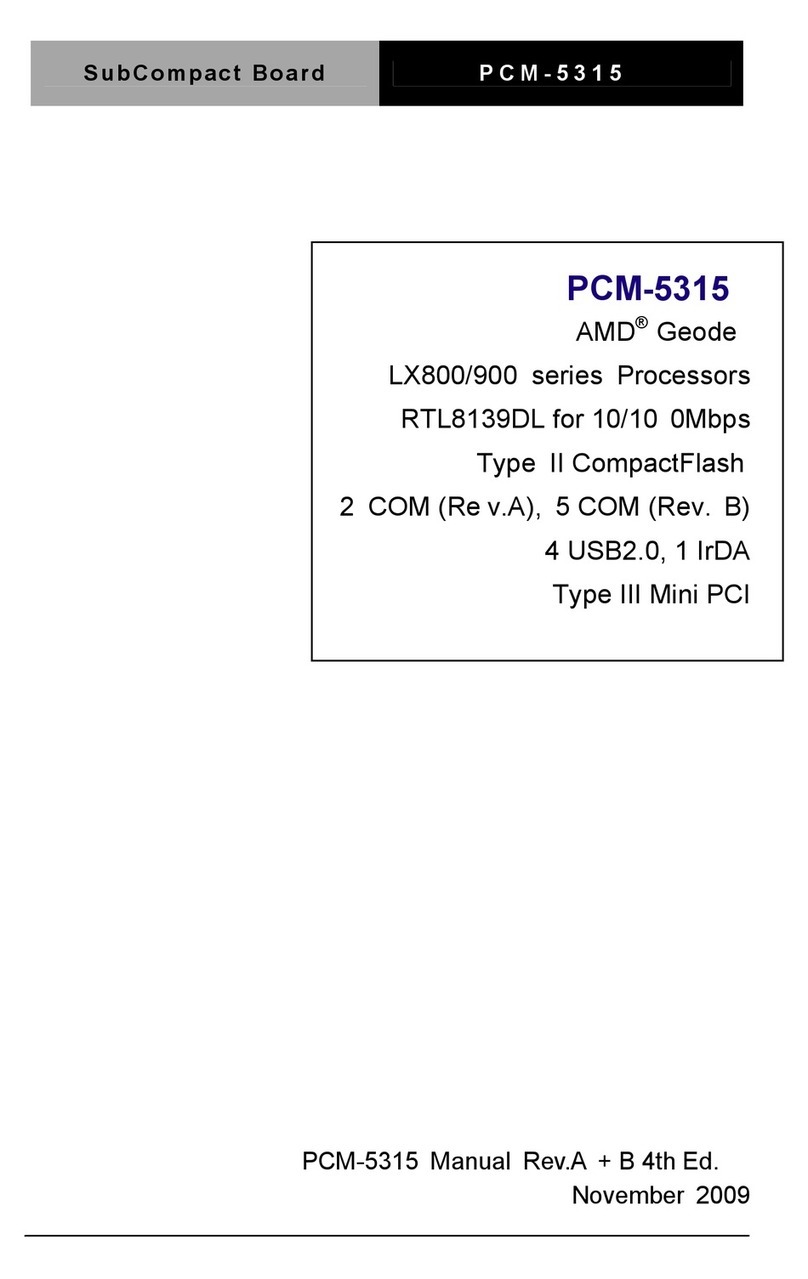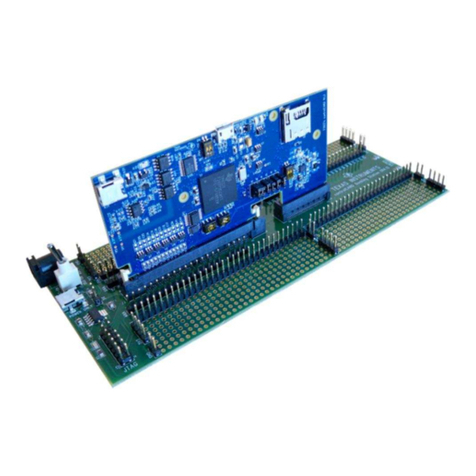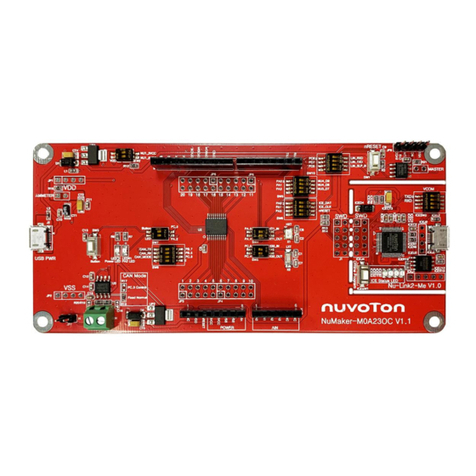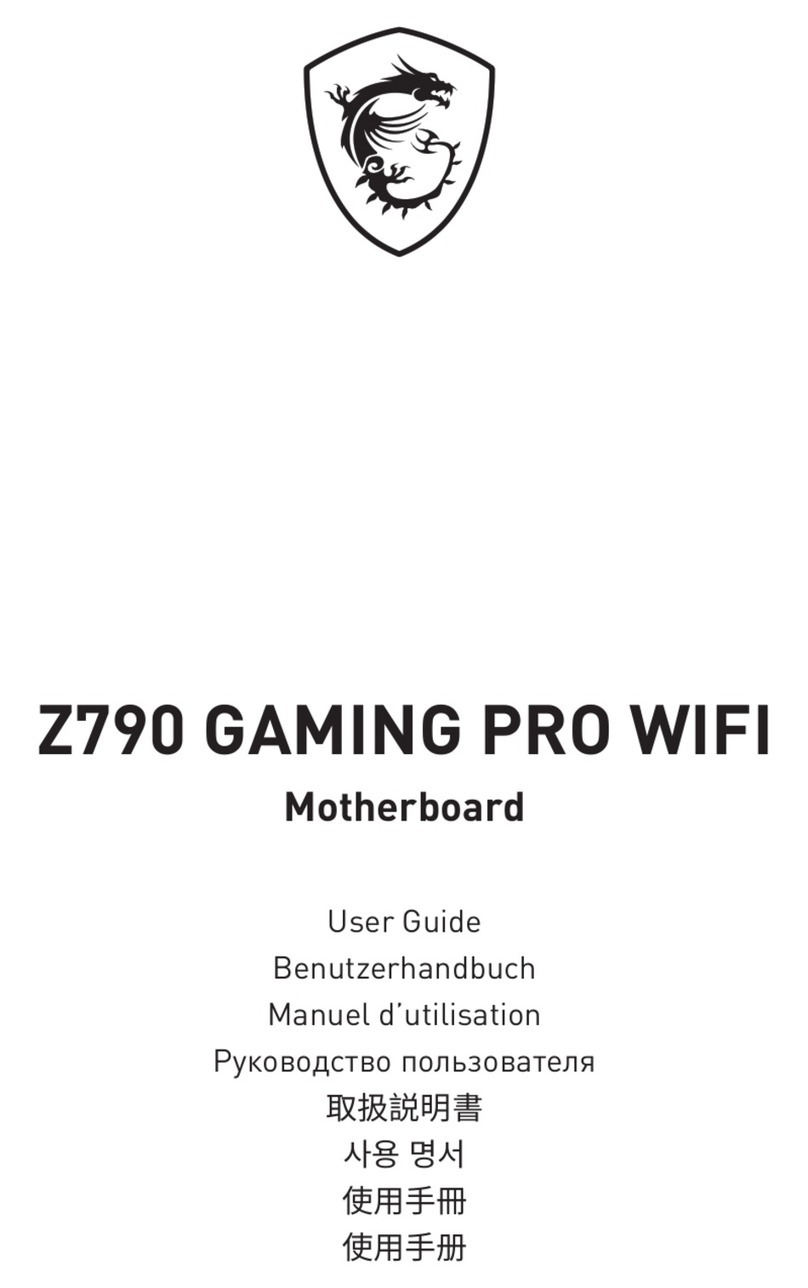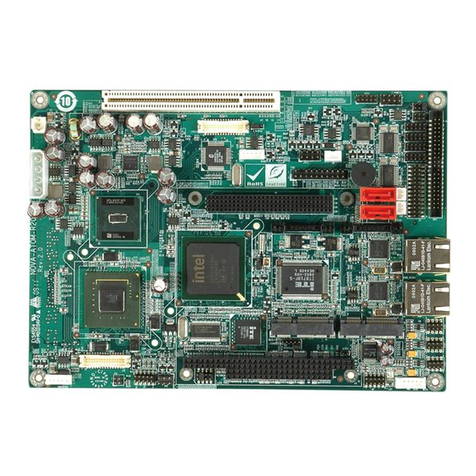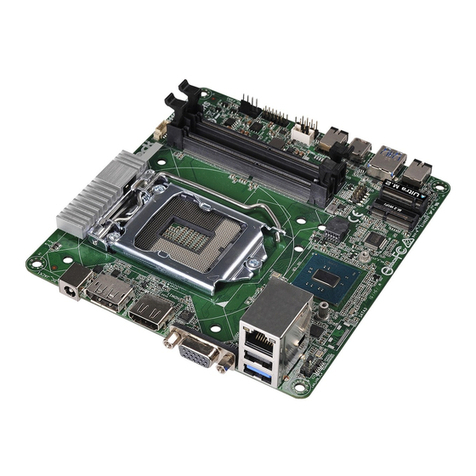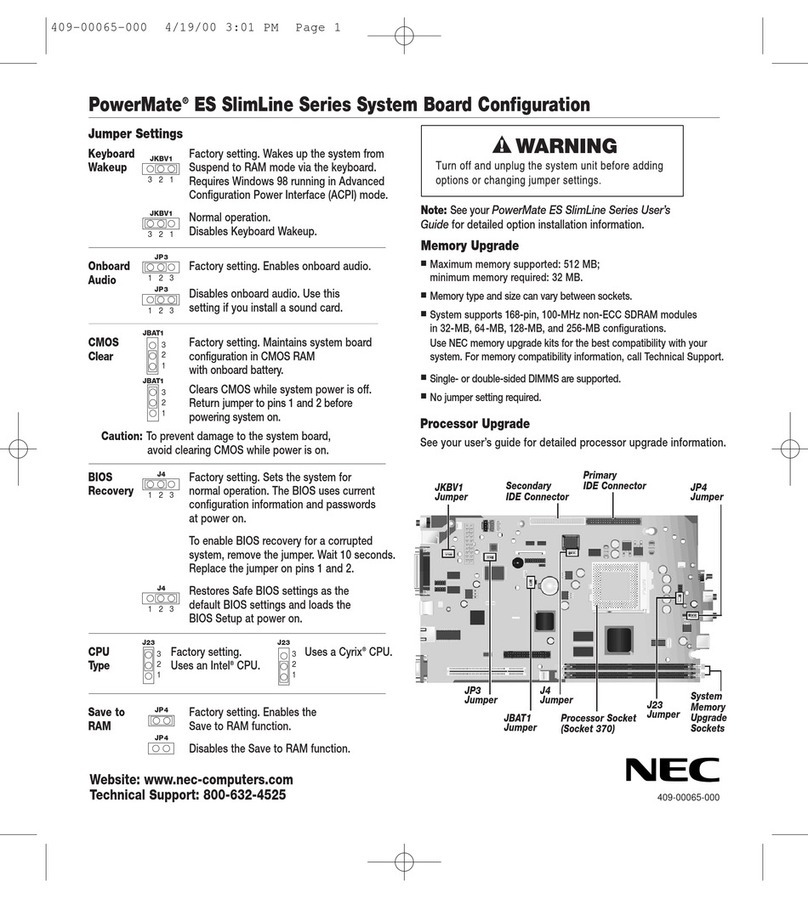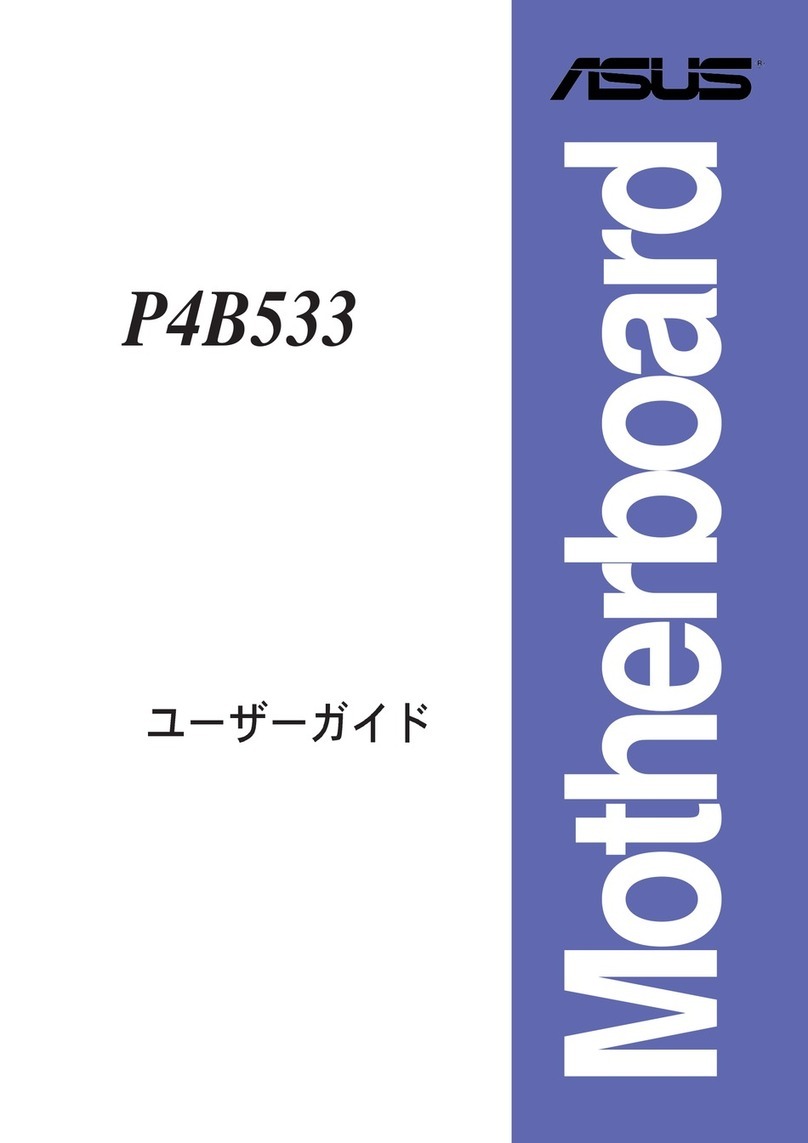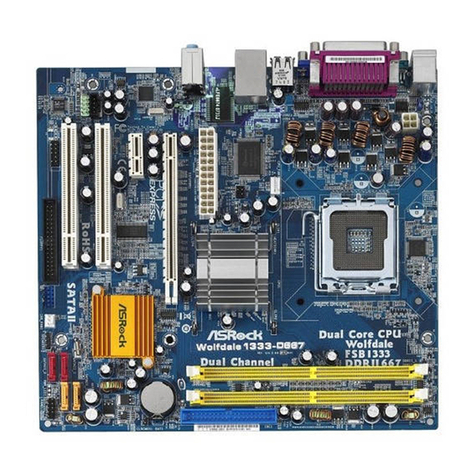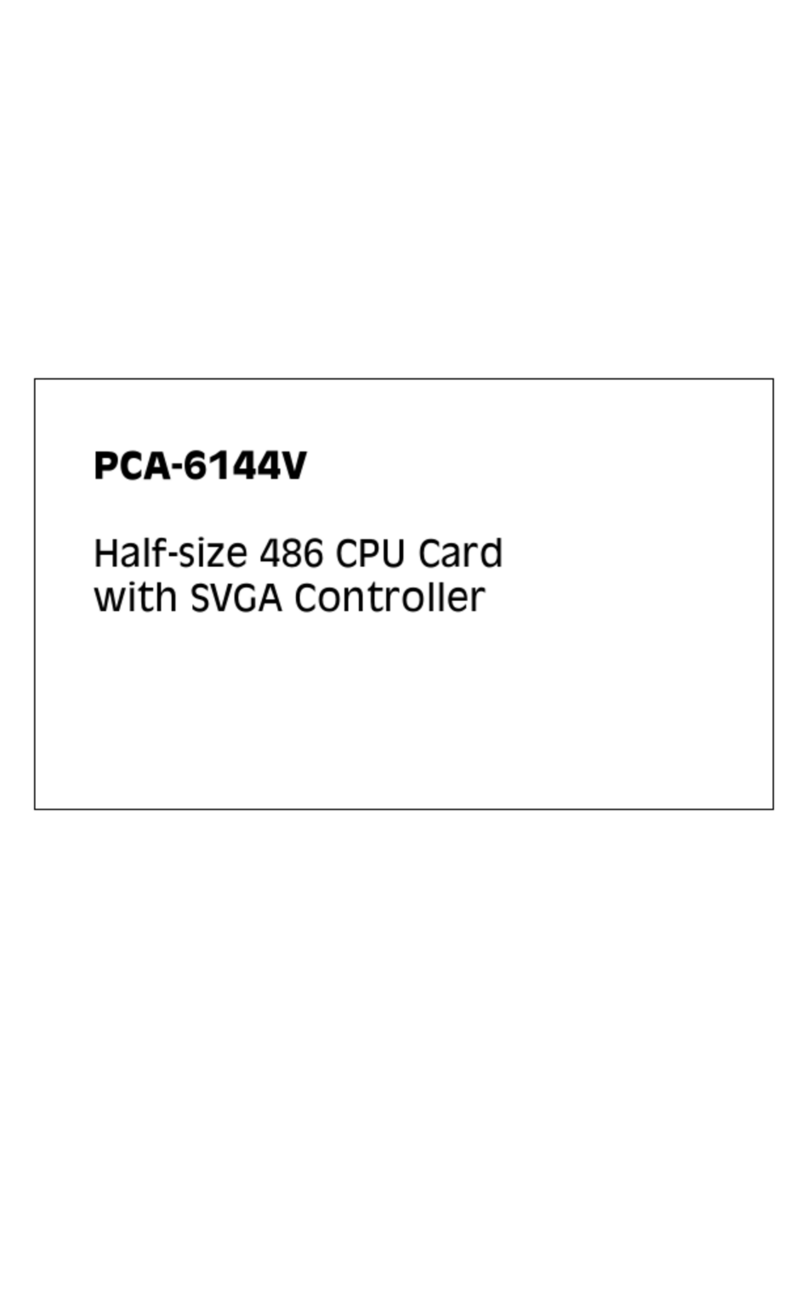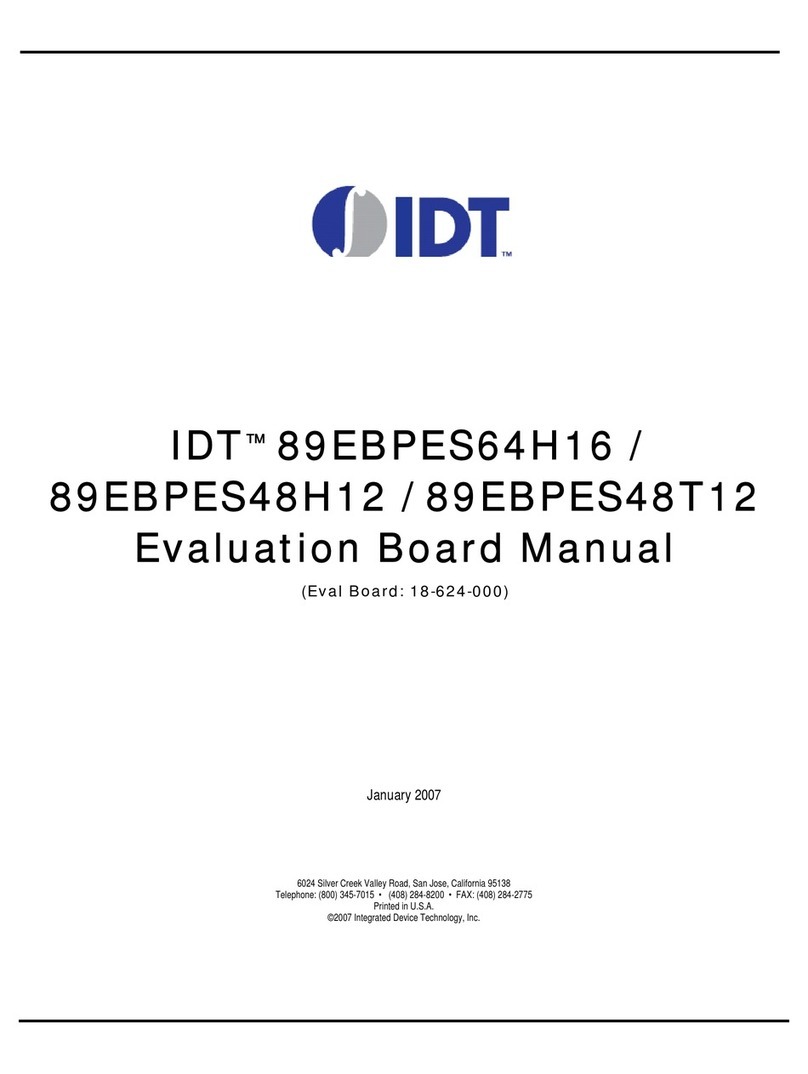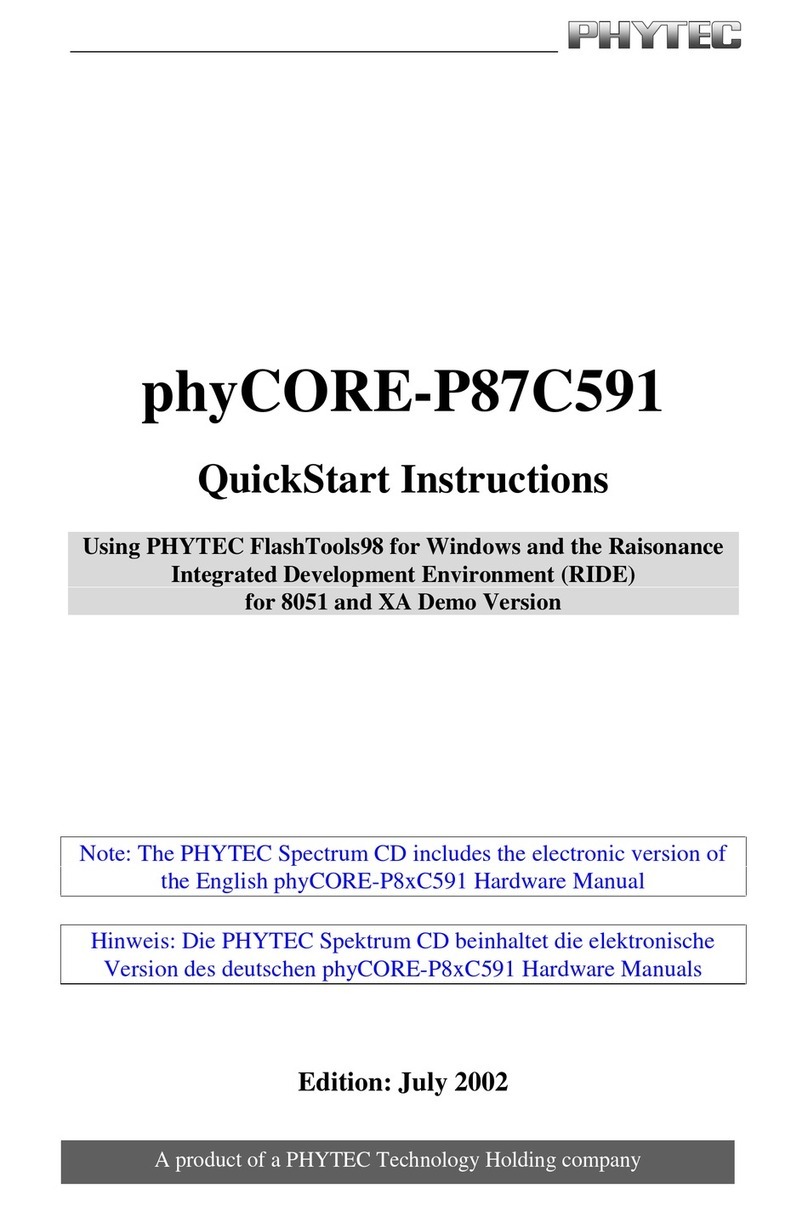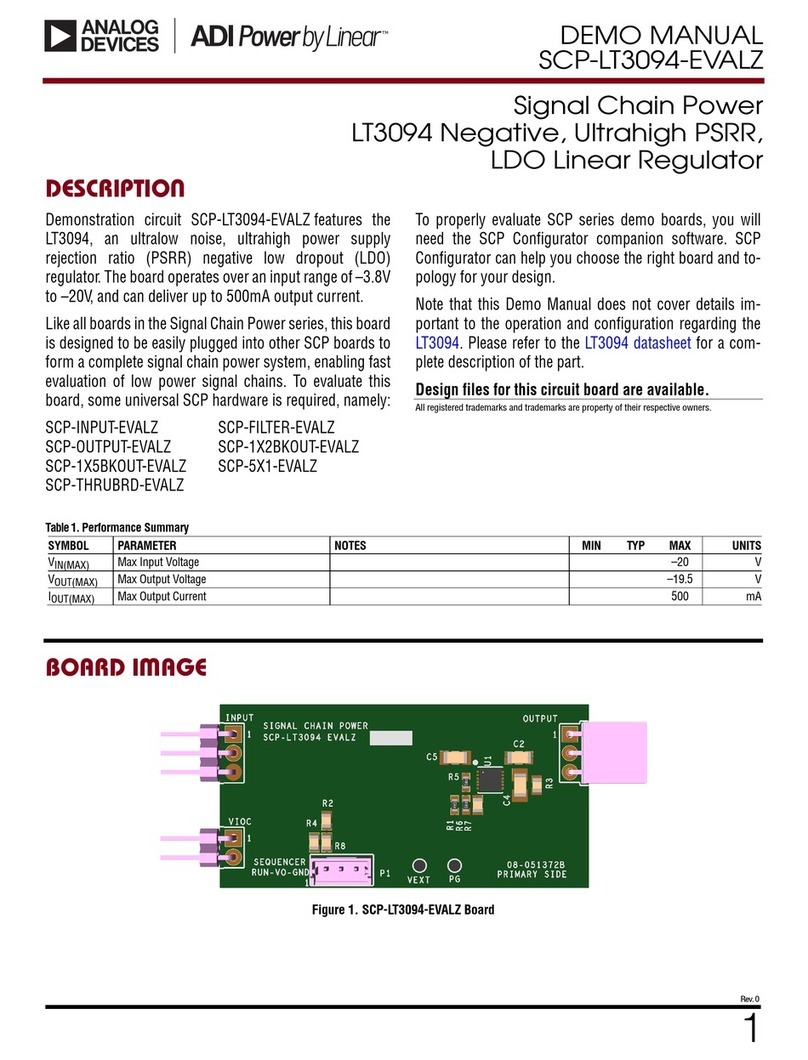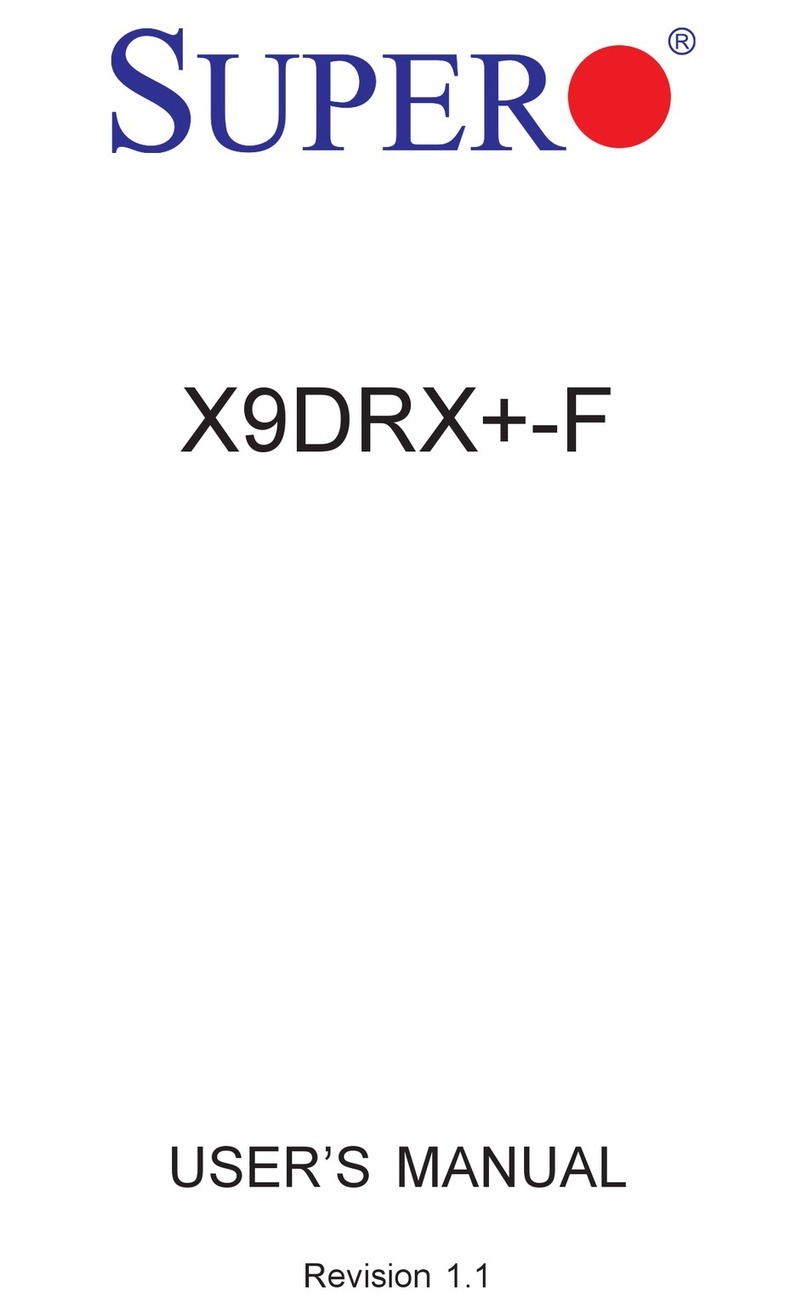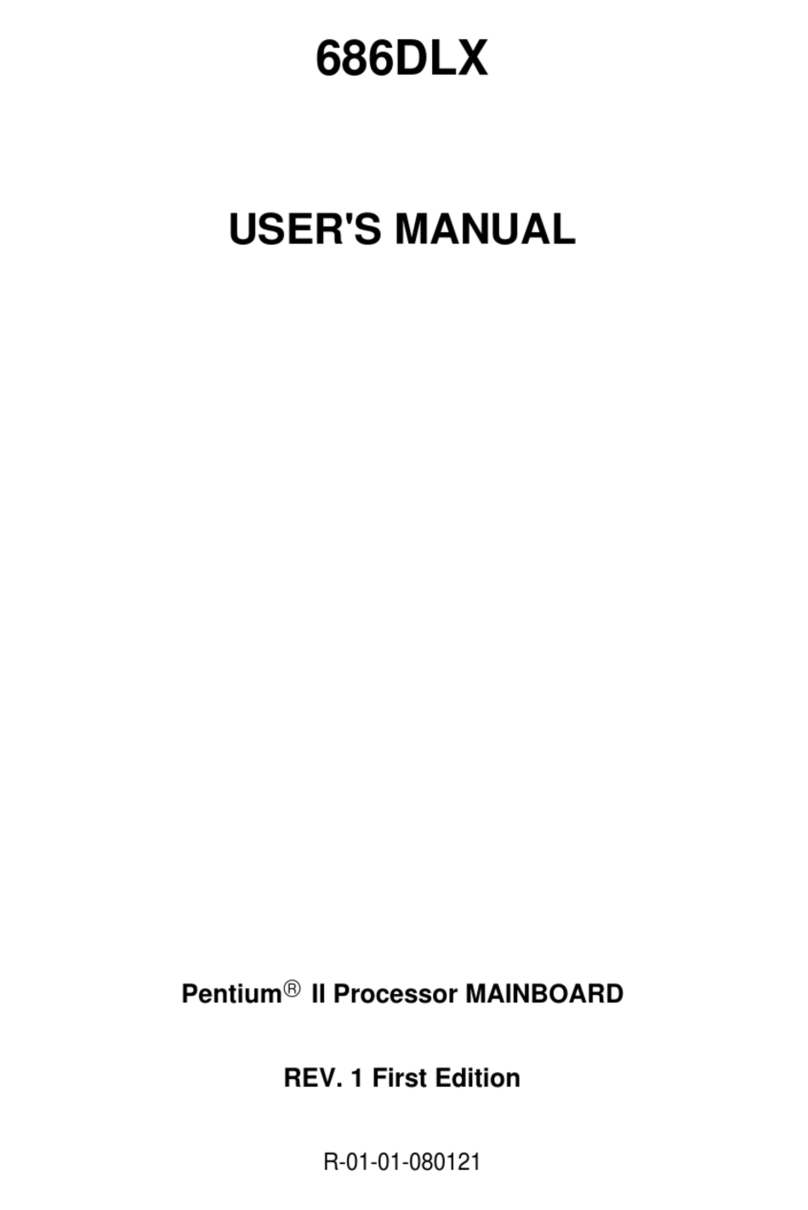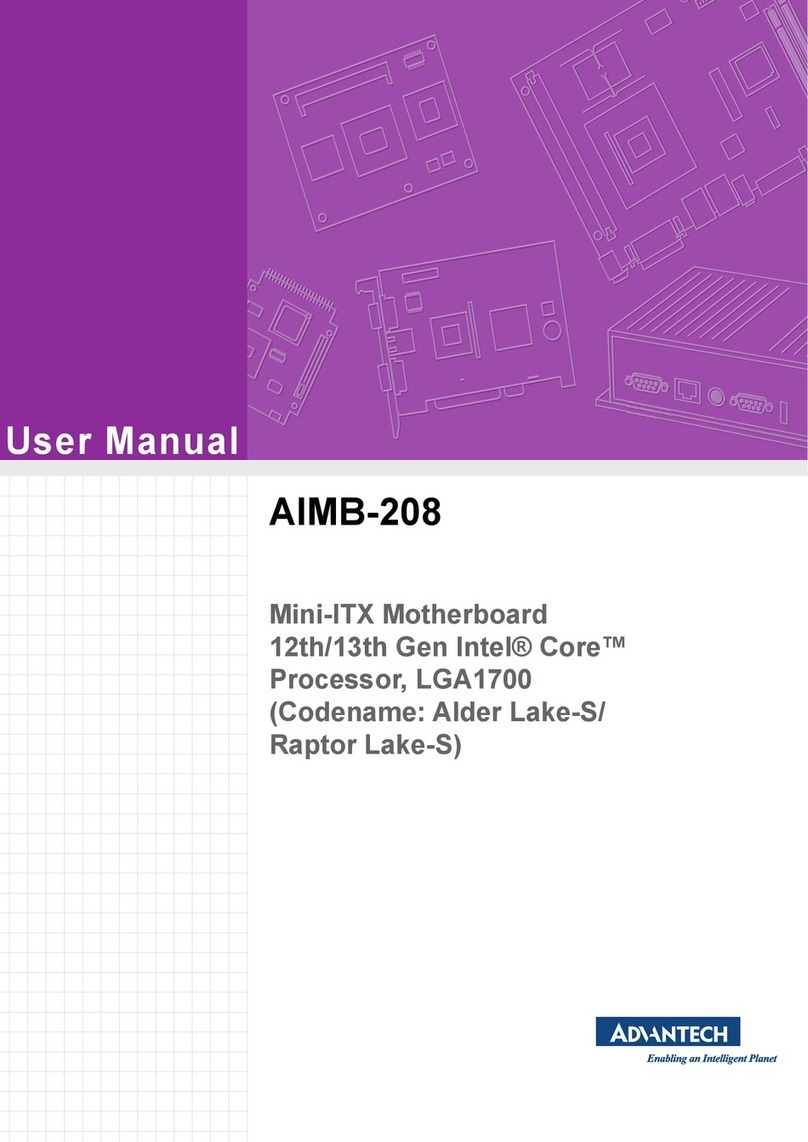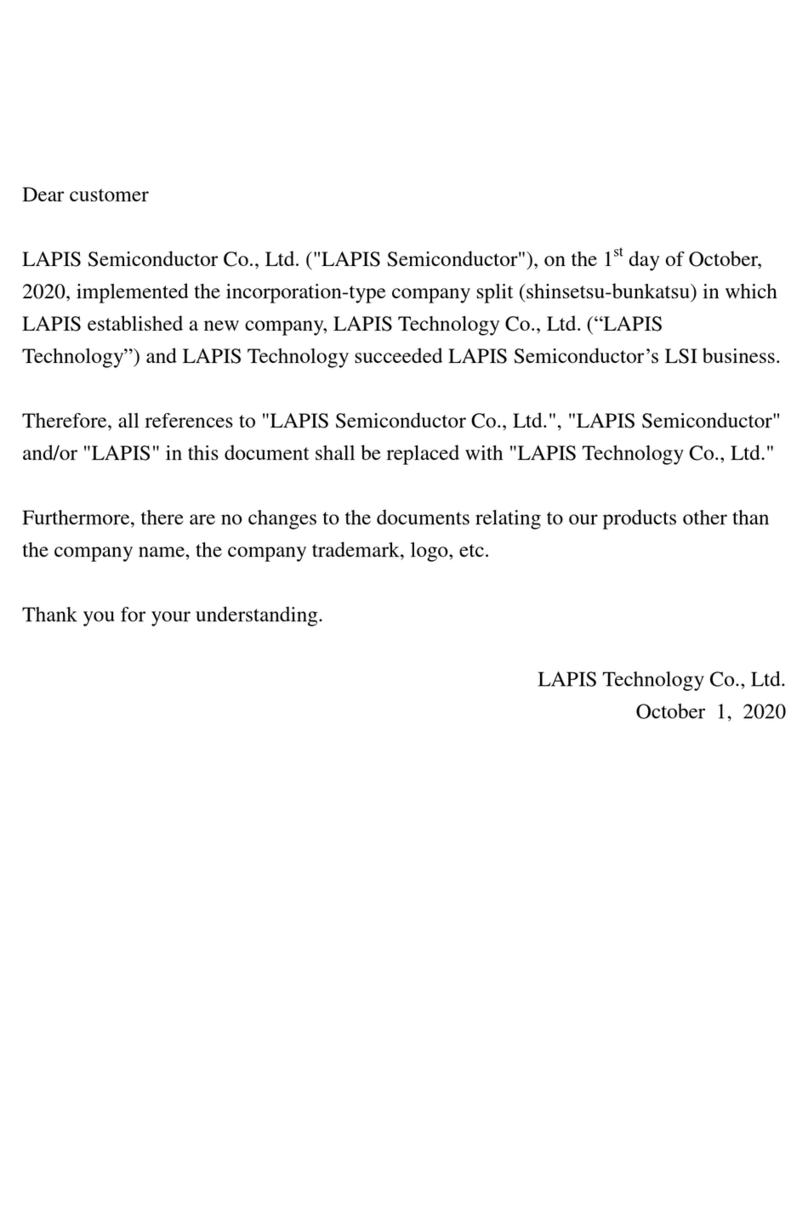EMAC PCM-6892E User manual

User’s Manual
PCM-6892E
All-in-One FC 370 Pentium III/Celeron Single Board with LCD,
AC97 Audio, Dual 10/100Base-Tx Ethernet Interfaces, & 4 COMs
1st Ed. - 20 March 2001

PCM-6892E
FCC STATEMENT
THIS DEVICE COMPLIES WITH PART 15 FCC RULES. OPERATION IS SUBJECT TO
THE FOLLOWING TWO CONDITIONS:
(1) THIS DEVICE MAY NOT CAUSE HARMFUL INTERFERENCE.
(2) THIS DEVICE MUST ACCEPT ANY INTERFERENCE
RECEIVED INCLUDING INTERFERENCE THAT MAY CAUSE UNDESIRED
OPERATION.
THIS EQUIPMENT HAS BEEN TESTED AND FOUND TO COMPLY WITH THE LIMITS
FOR A CLASS "A" DIGITAL DEVICE, PURSUANT TO PART 15 OF THE FCC RULES.
THESE LIMITS ARE DESIGNED TO PROVIDE REASONABLE PROTECTION
AGAINTST HARMFUL INTERFERENCE WHEN THE EQUIPMENT IS OPERATED IN A
COMMERCIAL ENVIRONMENT. THIS EQUIPMENT GENERATES, USES, AND CAN
RADIATE RADIO FREQUENCY ENERGY AND, IF NOT INSTATLLED AND USED IN
ACCORDANCE WITH THE INSTRUCTION MANUAL, MAY CAUSE HARMFUL
INTERFERENCE TO RADIO COMMUNICATIONS.
OPERATION OF THIS EQUIPMENT IN A RESIDENTIAL AREA IS LIKELY TO CAUSE
HARMFUL INTERFERENCE IN WHICH CASE THE USER WILL BE REQUIRED TO
CORRECT THE INTERFERENCE AT HIS OWN EXPENSE.

User’s Manual
Copyright Notice
Copyright 2001, ALL RIGHTS RESERVED.
No part of this document may be reproduced, copied, translated, or transmitted in any
form or by any means, electronic or mechanical, for any purpose, without the prior written
permission of the original manufacturer.
Trademark Acknowledgement
Brand and product names are trademarks or registered trademarks of their respective
owners.
Disclaimer
EMAC, Inc. reserves the right to make changes, without notice, to any
product, including circuits and/or software described or contained in this manual in order
to improve design and/or performance. EMAC assumes no responsibility or
liability for the use of the described product(s), conveys no license or title under any patent,
copyright, or mask work rights to these products, and makes no representations or
warranties that these products are free from patent, copyright, or mask work right
infringement, unless otherwise specified. Applications that are described in this manual
are for illustration purposes only. EMAC, Inc. makes no representation or
warranty that such application will be suitable for the specified use without further testing
or modification.
Life Support Policy
EMAC, Inc. PRODUCTS ARE NOT FOR USE AS CRITICAL COMPONENTSIN
LIFE SUPPORT DEVICES OR SYSTEMS WITHOUT THE PRIOR WRITTEN APPROVAL
OF EMAC, Inc.
As used herein:
1. Life support devices or systems are devices or systems which, (a) are intended for
surgical implant into body, or (b) support or sustain life and whose failure to perform,
when properly used in accordance with instructions for use provided in the labelling,
can be reasonably expected to result in significant injury to the user.
2. A critical component is any component of a life support device or system whose failure
to perform can be reasonably expected to cause the failure of the life support device or
system, or to affect its safety or effectiveness.

PCM-6892E
A Message to the Customer
EMAC Customer Services
Each and everyEMAC product isbuilt to the most exacting specifications to ensure
reliable performance in the harsh and demanding conditions typical of industrial
environments. Whether your new EMAC device isdestined for the laboratoryor the
factory floor, you can be assured that your product will provide the reliability and ease of
operation for which the name EMAC has come to be known.
Your satisfaction isour primaryconcern. Here isa guide to EMAC’scustomer services.
To ensure you get the full benefit of our services, please follow the instructions below
carefully.
Technical Support
We want you to get the maximum performance from your products. So if you run into
technical difficulties, we are here to help. For the most frequently asked questions, you
can easily find answers in your product documentation. These answers are normally a lot
more detailed than the ones we can give over the phone. So please consult this manual
first.
To receive the latest version of the user manual, please visit our Web site at:
http://www.emacinc.com/
If you still cannot find the answer, gather all the information or questions that apply to your
problem, and with the product close at hand, call your dealer. Our dealers are well trained
and ready to giveyou the support you need to get the most from your EMAC product. In
fact, most problems reported are minor and are able to be easily solved over the phone.
In addition, free technical support isavailable from EMAC engineers everybusiness day.
We are always ready to give advice on application requirements or specific information on
the installation and operation of any of our products. Please do not hesitate to call or e-
mail us.
EMAC, Inc.
2390 EMAC Way
Carbondale, IL 62901
U.S.A.
Tel : (618)529-4525
Fax : (618)457-0110
http://www.emacinc.com
E-mail: info@emacinc.com

User’s Manual
Product Warranty
EMAC warrants to you, the original purchaser, that each of its products will be free from
defects in materials and workmanship for two years from the date of purchase.
This warranty does not apply to any products which have been repaired or altered by
persons other than repairpersonnel authorized by EMAC,or which have been subject to
misuse, abuse, accident or improper installation. EMAC assumes no liability under the
terms of thiswarranty as a consequence of such events. Because of EMAC’shigh
quality-control standards and rigorous testing, most of our customers never need to use
our repair service. If an EMAC product is defective, it will be repaired or replaced at no
charge during the warranty period. For out-of-warranty repairs, you will be billed according
to the cost of replacement materials, service time, and freight. Please consult your dealer
for more details. If you think you have a defective product, follow these steps:
1. Collect all the information about the problem encountered. (For example, CPU type
and speed, EMAC product model name, hardware & BIOS revision number, other
hardware and software used, etc.) Note anything abnormal and list any on-screen
messages you get when the problem occurs.
2. Call your dealer and describe the problem. Please have your manual, product, and any
helpful information readily available.
3. If your product is diagnosed as defective, obtain an RMA (return material authorization)
number from your dealer. This allows us to process your good return more quickly.
4. Carefully pack the defective product, a complete Repair and Replacement Order Card
and a photocopy proof of purchase date (such as your sales receipt) in a shippable
container. A product returned without proof of the purchase date is not eligible for
warranty service.
5. Write the RMA number visibly on the outside of the package and ship it prepaid to your
dealer.

PCM-6892E
Packing List
Before you begin installing your single board, please make sure that the following
materials have been shipped:
1 PCM-6892E All-in-One FC370 Celeron / Pentium III Computing Module
1 Quick Installation Guide
1 CD-ROM contains the followings:
— User’s Manual (this manual in PDF file)
— Ethernet driver and utilities
— VGA drivers and utilities
— Audio drivers and utilities
— Latest BIOS (as of the CD-ROM was made)
If any of these items are missing or damaged, please contact your distributor or sales
representative immediately.

User’s Manual
1. MANUAL OBJECTIVES........................................................................................................ 1
2. INTRODUCTION ...................................................................................................................2
2.1 System Overview..............................................................................................................2
2.2 System Specifications .....................................................................................................3
2.3 Architecture Overview .....................................................................................................6
2.3.1 VIA VT82C694X ..........................................................................................................7
2.3.2 DRAM Interface ...........................................................................................................7
2.3.3 AGP Interface ..............................................................................................................7
2.3.4 PCI Interface................................................................................................................8
2.3.5 VIA VT82C686A ..........................................................................................................8
2.3.6 IDE Interface (Bus Master Capability and Synchronous DMA Mode) ...........................9
2.3.7 USB .............................................................................................................................9
2.3.8 SMI Lynx3DM SM721 VGA Controller..........................................................................9
2.3.9 Panel Interface........................................................................................................... 11
2.3.10 Zoom Video Port........................................................................................................ 11
2.3.11 TV Encoder................................................................................................................12
2.3.12 Ethernet .....................................................................................................................13
2.3.13 Compact Flash Interface............................................................................................ 14
2.3.14 Panel Link Interface (Optional)...................................................................................14
3. HARDWARE CONFIGURATION......................................................................................... 15
3.1 Installation Procedure.................................................................................................... 15
3.2 Safety Precautions ......................................................................................................... 15
3.2.1 Warning! ....................................................................................................................15
3.2.2 Caution! ..................................................................................................................... 15
3.3 Socket 370 Processor .................................................................................................... 16
3.3.1 Installing Pentium III / Celeron CPU...........................................................................16
3.3.2 Removing CPU ..........................................................................................................16
3.4 Main Memory .................................................................................................................. 16
3.5 Jumper & Connector...................................................................................................... 17
3.5.1 Jumper & Connector Layout ......................................................................................17
3.5.2 Jumper & Connector List ...........................................................................................18
Connectors............................................................................................................................... 19
3.6 Setting Jumpers ............................................................................................................. 20
3.7 Clear CMOS (J3) ............................................................................................................. 20
3.8 COM3 / 4 Pin 9 Signal Select (J5 / J4)........................................................................... 21
3.9 COM2 RS-232/422/485 Select (J6, J7) ...........................................................................22

PCM-6892E
3.10 Connector Definitions .................................................................................................... 23
3.10.1 Power Connector 1 (PWR1) ......................................................................................23
3.10.2 LCD Inverter Connector (J1) ......................................................................................23
3.10.3 Signal Configuration – LCD Inverter Connector (J1) ..................................................23
3.10.4 Auxiliary Power Connector (J2).................................................................................. 24
3.10.5 Ethernet 1 / 2 LED Connector (CN1)..........................................................................24
3.10.6 Signal Description – Ethernet 1 / 2 LED Connector (CN1) ......................................... 24
3.10.7 Zoom Video Port Connector (CN2) ............................................................................ 25
3.10.8 Signal Description – Zoom Video Port Connector (CN2)............................................25
3.10.9 Video Port Interface I/O Compliance.......................................................................... 26
3.10.10 Primary LCD Panel Connector (CN3) ........................................................................27
3.10.11 Secondary LCD Panel Connector (CN4).................................................................... 28
3.10.12 Signal Description – Primary & Secondary LCD Panel Connector (CN3, CN4).......... 29
3.10.13 Signal Configuration – DSTN & TFT Panel Displays..................................................30
3.10.14 CD-ROM Audio Input Connector (CN5) ..................................................................... 32
3.10.15 Signal Configuration – CD-ROM Input Connector (CN5) ...........................................32
3.10.16 Audio / TV Output Connector (CN6) ..........................................................................33
3.10.17 Signal Description – Audio / TV Output Connector (CN6) ..........................................33
3.10.18 Pin Header Serial Port 1 / 2 / 3 / 4 Connector in RS-232 Mode (CN7) .......................34
3.10.19 Serial Port 1 / 2 / 3 / 4 with External DB9 Connector.................................................. 34
3.10.20 Signal Description – Serial Port 1 / 2 / 3 / 4 Connector in RS-232 Mode (CN7) .........35
3.10.21 Pin Header Serial Port 2 Connector (CN7 / Pin 11~20) in RS-422 Mode ................... 35
3.10.22 Signal Description – Serial Port 2 in RS-422 Mode .................................................... 35
3.10.23 Pin Header Serial Port 2 Connector (CN7 / Pin 11~20) in RS-485 Mode ................... 36
3.10.24 Signal Description – Serial Port 2 in RS-485 Mode .................................................... 36
3.10.25 PC/104 Connector (CN8, CN9).................................................................................. 37
3.10.26 Signal Description – PC/104 Connector (CN8, CN9) ................................................. 38
3.10.27 Keyboard and PS/2 Mouse Connector (CN10)........................................................... 41
3.10.28 Signal Description – Keyboard / Mouse Connector (CN10)........................................ 41
3.10.29 IDE Device Connector (CN11) ................................................................................... 42
3.10.30 Signal Description – IDE Device Connector (CN11)...................................................43
3.10.31 CPU Fan Connector (CN12) ...................................................................................... 44
3.10.32 Signal Description – CPU Fan Connector (CN12)...................................................... 44
3.10.33 Front Panel Connector (CN13) ..................................................................................44
3.10.34 Signal Description – Front Panel Connector (CN13) ..................................................44
3.10.35 Floppy Disk Connector (FLP1)................................................................................... 45
3.10.36 Signal Description – Floppy Disk Connector (FLP1) ..................................................46
3.10.37 IrDA Connector (IR1) .................................................................................................46
3.10.38 Signal Configuration – IR Connector (IR1)................................................................. 46
3.10.39 10/100 BASE-Tx Ethernet Connector (LAN1, LAN2) ................................................. 47
3.10.40 Signal Description – 10/100Base-Tx Ethernet Connector (LAN1, LAN2) ................... 47
3.10.41 Panel Link Connector (PL1, Optional)........................................................................47
3.10.42 Signal Description – Panel Link Connector (PL1, Optional) .......................................48
3.10.43 Parallel Port Connector (PNT1) ................................................................................. 49
3.10.44 DB25 Parallel Port Connector .................................................................................... 50
3.10.45 Signal Description – Parallel Port (PNT1) ..................................................................51
3.10.46 USB Connector (USB1) ............................................................................................. 51
3.10.47 Signal Description – USB Connector (USB1)............................................................. 51
3.10.48 CRT Connector (VGA1) .............................................................................................52
3.10.49 Signal Description – CRT Connector (VGA1)............................................................. 52
3.10.50 LCD Backlight Brightness Adjustment Connector (VR1)............................................ 52
3.10.51 STN LCD Contrast Adjustment Connector (VR2)....................................................... 53

User’s Manual
4. AWARD BIOS SETUP ........................................................................................................ 54
4.1 Starting Setup.................................................................................................................54
4.2 Using Setup ....................................................................................................................55
4.2.1 Navigating Through The Menu Bar ............................................................................55
4.2.2 To Display a Sub Menu.............................................................................................. 55
4.3 Getting Help....................................................................................................................56
4.4 In Case of Problems.......................................................................................................56
4.5 Main Menu.......................................................................................................................56
4.5.1 Setup Items ............................................................................................................... 57
4.5.2 Standard CMOS Setup .............................................................................................. 58
4.5.3 Advanced BIOS Features ..........................................................................................61
4.5.4 Advanced Chipset Features.......................................................................................64
4.5.5 Integrated Peripherals................................................................................................ 67
4.5.6 Power Management Setup.........................................................................................70
4.5.7 PnP/PCI Configuration Setup.....................................................................................74
4.5.8 Frequency / Voltage Control ...................................................................................... 77
4.5.9 Defaults Menu............................................................................................................78
4.5.10 Supervisor / User Password Setting........................................................................... 79
4.5.11 Exit Selecting .............................................................................................................80
5. DRIVER INSTALLATION .................................................................................................... 82
5.1 Driver Installation for Ethernet Adapter........................................................................ 82
5.1.1 Windows 9x ............................................................................................................... 82
5.1.2 Windows NT 4.0 Ethernet Installation ........................................................................87
5.2 Driver Installation for Display Adapter ......................................................................... 93
5.2.1 Windows 9x ............................................................................................................... 93
5.2.2 Windows NT 4.0 Display Installation.......................................................................... 98
5.3 Driver Installation for Audio Adapter .......................................................................... 102
5.3.1 Windows 9x ............................................................................................................. 102
5.3.2 Windows NT 4.0 Audio Installation .......................................................................... 107
6. MEASUREMENT DRAWING ............................................................................................ 112

PCM-6892E
APPENDIX A: BIOS REVISIONS ............................................................................................... 113
APPENDIX B: SYSTEM RESOURCES ...................................................................................... 114
Memory Map......................................................................................................................... 114
I/O – Map.............................................................................................................................. 115
Interrupt Usage..................................................................................................................... 117
DMA-channel Usage............................................................................................................. 118
APPENDIX C: PROGRAMMING THE WATCHDOG TIMER ...................................................... 119
Introduction........................................................................................................................... 119
Configure Register................................................................................................................ 119
Programming Watchdog Timer.............................................................................................120
Demo Program 1 (Micro-Assembly Language) ..................................................................... 121
Demo Program 2 (C Language)............................................................................................ 124
APPENDIX D: AWARD BIOS POST MESSAGES...................................................................... 126
POST Beep ............................................................................................................................. 126
Error Messages...................................................................................................................... 126
CMOS Battery Has Failed..................................................................................................... 126
CMOS Checksum Error ........................................................................................................ 126
Disk Boot Failure, Insert System Disk and Press Enter ........................................................ 126
Diskette Drives or Types Mismatch Error – Run Setup ......................................................... 126
Display Switch Is Set Incorrectly ........................................................................................... 126
Display Type Has Changed Since Last Boot ........................................................................127
Error Encountered Initializing Hard Drive.............................................................................. 127
Error Initializing Hard Disk Controller ....................................................................................127
Floppy Disk Cntrlr Error or No Cntrlr Present........................................................................ 127
Keyboard Error or No Keyboard Present .............................................................................. 127
Memory Address Error at...................................................................................................... 127
Memory Parity Error at.......................................................................................................... 127
Memory Size Has Changed Since Last Boot ........................................................................ 127
Memory Verify Error at.......................................................................................................... 128
Offending Address Not Found ..............................................................................................128
Offending Segment:.............................................................................................................. 128
Press A Key to Reboot ......................................................................................................... 128
Press F1 to Disable NMI, F2 to Reboot ................................................................................ 128
RAM Parity Error – Checking for Segment... ........................................................................ 128
System Halted, (CTRL-ALT-DEL) to Reboot......................................................................... 128
Floppy Disk(s) Fail (80) →Unable to Reset Floppy Subsystem............................................ 128
Floppy Disk(s) Fail (40) →Floppy Type Dismatch ................................................................ 128
Hard Disk(s) Fail (80) →HDD Reset Failed..........................................................................128
Hard Disk(s) Fail (40) →HDD Controller Diagnostics Failed ................................................ 128
Hard Disk(s) Fail (20) →HDD Initialization Error .................................................................. 128
Hard Disk(s) Fail (10) →Unable to Recalibrate Fixed Disk...................................................128
Hard Disk(s) Fail (08) →Sector Verify Failed ....................................................................... 129
Keyboard Is Locked Out - Unlock The Key ........................................................................... 129
Keyboard Error or No Keyboard Present .............................................................................. 129
Manufacturing POST Loop ................................................................................................... 129
BIOS ROM Checksum Error – System Halted ...................................................................... 129
Memory Test Fail.................................................................................................................. 129

User’s Manual
APPENDIX E: AWARD BIOS POST CODES ............................................................................. 130
APPENDIX F: AUDIO / USB DAUGHTER BOARD USER’S GUIDE.......................................... 136
Jumper & Connector Layout................................................................................................. 136
Jumper & Connector List ...................................................................................................... 136
Measurement Drawing........................................................................................................... 137

PCM-6892E
Document Amendment History
Revision Date By Comment
1st Mar. 01. Philip Chang Initial Release

PCM-6892E
PCM-6892E User’s Manual 1
1. Manual Objectives
Thismanual describes in detailthe EMAC, Inc. PCM-6892E SingleBoard
Computer.
We have tried to include as much information as possible but we have not duplicated
information that is provided in the standard IBM Technical References, unless it proved to
be necessary to aid in the understanding of this board.
We strongly recommend that you study this manual carefully before attempting to
interface with PCM-6892E or change the standard configurations. Whilst all the necessary
information is available in this manual we would recommend that unless you are confident,
you contact your supplier for guidance.
Please be aware that it is possible to create configurations within the CMOS RAM that
make booting impossible. If this should happen, clear the CMOS settings, (see the
description of the Jumper Settings for details).
If you have any suggestions or find any errors concerning this manual and want to inform
us of these, please contact our Customer Service department with the relevant details.

User’s Manual
2 PCM-6892E User’s Manual
2. Introduction
2.1 System Overview
The PCM-6892E is a compact 5.25” CD-ROM size Single Board Computer that equips
with VIA Apollo Pro 133A AGPset, SMI AGP 2X Lynx3DM 2D/3D Graphics and
Multimedia Accelerator w/ Embedded 4MB SGRAM, Dual LCD interfaces, NTSC/PAL TV
output, AC97 Audio, and dual PCI-bus Ethernet interfaces.
Targeting on the rapid growing networking and multimedia embedded markets, the PCM-
6892E comes designed with dual PCI-bus Intel 82559ER 10/100Base-Tx chips and dual
LCD interfaces. This make it a perfect solution for not only popular Networking Devices
like Firewall, Gateway, Router, Thin Server, and E-Box but also Retail / Financial
Transaction Terminals, and high-end multimedia POS / KIOSK Terminals.
In addition, the on board 24-bit Panel Link interface, Zoom Video port, and NTSC/PAL TV
output interface make the PCM-6892E also ideal for demanding high-end Entertainment
Devices that require high integration multimedia Single Board Computer.
Other impressive features include PC133 FSB, Ultra DMA66 IDE, a Compact Flash socket
for type I/II Compact Flash storage card, four serial ports, one parallel port, one 168-pin
DIMM socket allowing for up to 256MB of SDRAM to be installed, and a PCI slot for future
expansion.

PCM-6892E
PCM-6892E User’s Manual 3
2.2 System Specifications
General Functions
‧
‧‧
‧CPU: Intel FC-370 Pentium III/Celeron (with system bus frequencies of 66/100/133MHz)
‧
‧‧
‧CPU socket: Intel Socket 370
‧
‧‧
‧BIOS: Award 256KB Flash BIOS
‧
‧‧
‧Chipset: VIA Apollo Pro 133A, VT82C694X
‧
‧‧
‧I/O Chipset: VT82C686A / Winbond W83977EF-AW
‧
‧‧
‧Memory: Onboard one 168-pin DIMM socket supports up to 256 Mbytes SDRAM
‧
‧‧
‧Enhanced IDE: Supports two IDE devices. Supports Ultra DMA/66 mode with data
transfer rate up to 66MB/sec. (20 x 2 header onboard)
‧
‧‧
‧FDD interface: Supports up to two floppy disk drives, 5.25" (360KB and 1.2MB) and/or
3.5" (720KB, 1.44MB and 2.88MB)
‧
‧‧
‧Parallel port: One bi-directional parallel port. Supports SPP, ECP, and EPP modes
‧
‧‧
‧Serial port: Three RS-232 and one RS-232/422/485 serial port. Ports can be
configured as COM1, COM2, COM3, COM4, or disabled individually. (16C550
equivalent)
‧
‧‧
‧IR interface: Supports one IrDA Tx/Rx header
‧
‧‧
‧KB/Mouse connector: 8-pin (4 x 2) connector supports PS/2 keyboard and mouse
‧
‧‧
‧USB connectors: One 5 x 2 header onboard supports dual USB ports
‧
‧‧
‧Watchdog Timer: Can generate a system reset, IRQ15 or NMI. Software selectable
time out interval (32 sec. ~ 254 min., 1 min./step)
‧
‧‧
‧DMA: 7 DMA channels (8237 equivalent)
‧
‧‧
‧Interrupt: 15 interrupt levels (8259 equivalent)
‧
‧‧
‧Power management: Supports ATX power supply. Supports PC97, LAN wake up and
modem ring-in functions. I/O peripheral devices support power saving and
doze/standby/suspend modes. APM 1.2 compliant.

User’s Manual
4 PCM-6892E User’s Manual
Flat Panel/CRT Interface
‧
‧‧
‧Chipset: SMI Lynx3DM SM721, high performance 128-bit GUI, 3D engine
‧
‧‧
‧Display memory: 4 MB of SGRAM frame buffer on Lynx3DM SM721G4. Optional 8 MB
SGRAM frame buffer on Lynx3DM SM721G8
‧
‧‧
‧Display type: Simultaneously supports CRT and flat panel (EL, LCD and gas plasma)
displays
‧
‧‧
‧Interface: 2X AGP, Accelerator Graphics Ports 1.0 compliant
‧
‧‧
‧Display mode:
LCD panel supports up to 800 x 600 @ 24 bpp, 1024 x 768 @ 24 bpp
CRT displays support up to 800 x 600 @ 24 bpp, 1024 x 768 @ 24 bpp
‧
‧‧
‧Video capture port: 40-pin YUV Direct Video Input Port onboard
‧
‧‧
‧TV output interface: Supports both RCA jack and S terminal
Panel Link (Optional)
‧
‧‧
‧Chipset: Sil 164 PanelLink Digital Transmitter
‧
‧‧
‧Scalable bandwidth: Ranging from 25 ~ 112 MHz (VGA ~ SXGA); 24/48-bit one/two
pixel per clock
Audio Interface
‧
‧‧
‧Chipset: VT82C686A
‧
‧‧
‧Audio controller: AC97 ver. 2.0 compliant interface, Multi-stream Direct Sound and
Direct Sound 3D acceleration
‧
‧‧
‧Audio interface: Microphone in, Line in, CD audio in, line out, Speaker L, Speaker R
Ethernet Interface
‧
‧‧
‧Chipset: Dual Intel 82559ER PCI-bus Ethernet controllers onboard
‧
‧‧
‧Ethernet interface: PCI 100/10 Mbps, IEEE 802.3U compatible
‧
‧‧
‧Remote Boot-ROM: For diskless system
SSD Interface
One CF socket supports Type I/II Compact Flash Card

PCM-6892E
PCM-6892E User’s Manual 5
Expansion Interface
‧
‧‧
‧PC/104 connector: One 16-bit 104-pin connector onboard
‧
‧‧
‧PCI slot: One 32-bit PCI slot onboard
Mechanical and Environmental
‧
‧‧
‧Power supply voltage: ATX type, +5V and +12V
‧
‧‧
‧Typical power requirement: 5V @ 5.2A, 12V @ 80mA w/ PIII 800MHz & 128MB
SDRAM
‧
‧‧
‧Operating temperature: 32 to 140°F (0 to 60°C)
‧
‧‧
‧Board size: 8”(L) x 5.75”(W) (203mm x 146mm)
‧
‧‧
‧Weight: 0.5 Kg

User’s Manual
6 PCM-6892E User’s Manual
2.3 Architecture Overview
The following block diagram shows the architecture and main components of PCM-6892E.
The two key components on board are the VIA VT82C694X North Bridge and VT82C686A
super South Bridge. These two devices provide the ISA and PCI bus to which all the major
components are attached.
The following sections provide detailed information about the functions provided onboard.

PCM-6892E
PCM-6892E User’s Manual 7
2.3.1 VIA VT82C694X
The VIA VT82C694X along with the VT82C686A companion chip provide the basic
functionality and buses of the system:
High Performance CPU interface.
Full Featured Accelerated Graphics Port (AGP) controller.
Advanced High-Performance DRAM controller. PC133 compliant SDRAM must be
used if 133MHz FSB CPU is to be used.
Concurrent PCI Bus controller.
PCI to ISA Bridge provided by VT82C686A super south bridge.
Universal Serial Bus controller integrated in the VT82C686A.
UltraDMA-33 / 66 Master Mode PCI EIDE controller. Two connectors are provided: A
40 pin pitch 2.54mm standard IDE interface on the primary controller and a Compact
Flash connector on the secondary controller.
SoundBlaster Pro hardware and Direct Sound ready AC97 Digital Audio controller.
2.3.2 DRAM Interface
The VT82C694X supports eight banks of DRAMs up to 1.5GB. The DRAM controller
supports standard Fast Page Mode (FPM) DRAM, EDO-DRAM, Synchronous DRAM
(SDRAM) and Virtual Channel SDRAM (VC SDRAM), in a flexible mix / match manner.
The Synchronous DRAM interface allows zero wait state bursting between the DRAM and
the data buffers at 66/100/133 MHz. The eight banks of DRAM can be composed of an
arbitrary mixture of 1M / 2M / 4M / 8M / 16M / 32MxN DRAMs. The DRAM controller also
supports optional ECC (single-bit error correction and multi-bit detection) or EC (error
checking) capability separately selectable on a bank-by-bank basis. The DRAM controller
can run at either the host CPU bus frequency (66 /100 /133MHz) or at the AGP bus
frequency (66 MHz) with built-in PLL timing control.
2.3.3 AGP Interface
The VT82C694X system controller also supports full AGP v2.0 capability for maximum
bus utilization including 2x and 4x mode transfers, SBA (SideBand Addressing),
Flush/Fence commands, and pipelined grants. An eight level request queue plus a four
level post-write request queue with thirty-two and sixteen quadwords of read and write
data FIFO's respectively are included for deep pipelined and split AGP transactions. A
single-level GART TLB with 16 full associative entries and flexible CPU / AGP / PCI
remapping control is also provided for operation under protected mode operating
environments. Both Windows-95 VXD and Windows-98 / NT5 miniport drivers are
supported for interoperability with major AGP-based 3D and DVD-capable multimedia
accelerators.

User’s Manual
8 PCM-6892E User’s Manual
2.3.4 PCI Interface
The VT82C694X supports two 32-bit 3.3 / 5V system buses (one AGP and one PCI) that
are synchronous / pseudo-synchronous to the CPU bus. The chip also contains a built-in
bus-to-bus bridge to allow simultaneous concurrent operations on each bus. Five levels
(doublewords) of post write buffers are included to allow for concurrent CPU and PCI
operation. For PCI master operation, forty-eight levels (doublewords) of post write buffers
and sixteen levels (doublewords) of prefetch buffers are included for concurrent PCI bus
and DRAM/cache accesses. The chip also supports enhanced PCI bus commands such
as Memory-Read-Line, Memory-Read-Multiple and Memory-Write-Invalid commands to
minimize snoop overhead. In addition, advanced features are supported such as snoop
ahead, snoop filtering, L1 write-back forward to PCI master, and L1 write-back merged
with PCI post write buffers to minimize PCI master read latency and DRAM utilization.
Delay transaction and read caching mechanisms are also implemented for further
improvement of overall system performance.
2.3.5 VIA VT82C686A
The VT82C686A PSIPC (PCI Super-I/O Integrated Peripheral Controller) is a high
integration, high performance, power-efficient, and high compatibility device that supports
Intel and non-Intel based processor to PCI bus bridge functionality to make a complete
Microsoft PC99-compliant PCI/ISA system. In addition to complete ISA extension bus
functionality, the VT82C686A includes standard intelligent peripheral controllers:
Two 16550-compatible serial I/O ports with infrared communications port option
on the second port.
LPT support for SPP, EPP and ECP modes.
Standard floppy disk drive interface.
Keyboard controller with PS2 mouse support.
Real Time Clock with 256 byte extended CMOS. In addition to the standard ISA
RTC functionality, the integrated RTC also includes the date alarm, century field,
and other enhancements for compatibility with the ACPI standard.
Notebook-class power management functionality compliant with ACPI and legacy
APM requirements. Multiple sleep states (power-on suspend, suspend-to-DRAM,
and suspend-to-Disk) are supported with hardware automatic wake-up.
Additional functionality includes event monitoring, CPU clock throttling and stop
(Intel processor protocol), PCI bus clock stop control, modular power, clock and
leakage control, hardware-based and software-based event handling, general
purpose I/O, chip select and external SMI.
Full System Management Bus (SMBus) interface.
Other manuals for PCM-6892E
1
Table of contents
Other EMAC Motherboard manuals
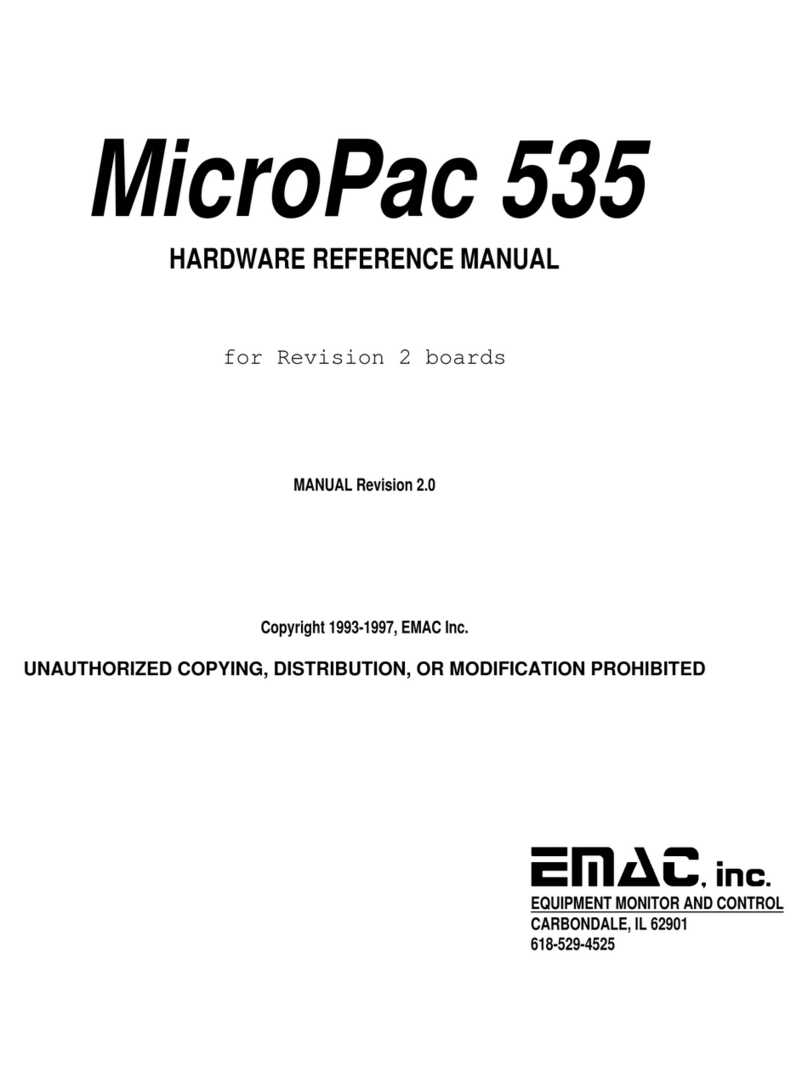
EMAC
EMAC MicroPac 535 Quick user guide
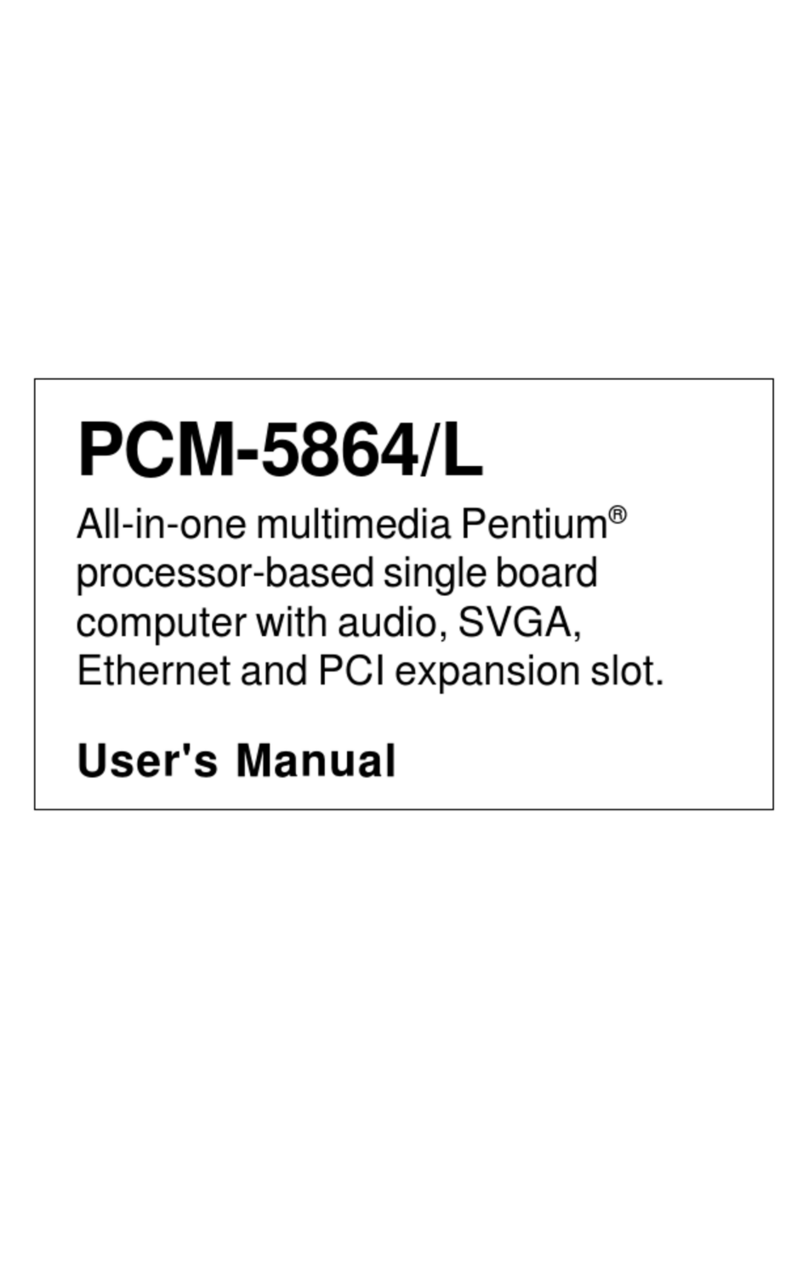
EMAC
EMAC PCM-5864 User manual
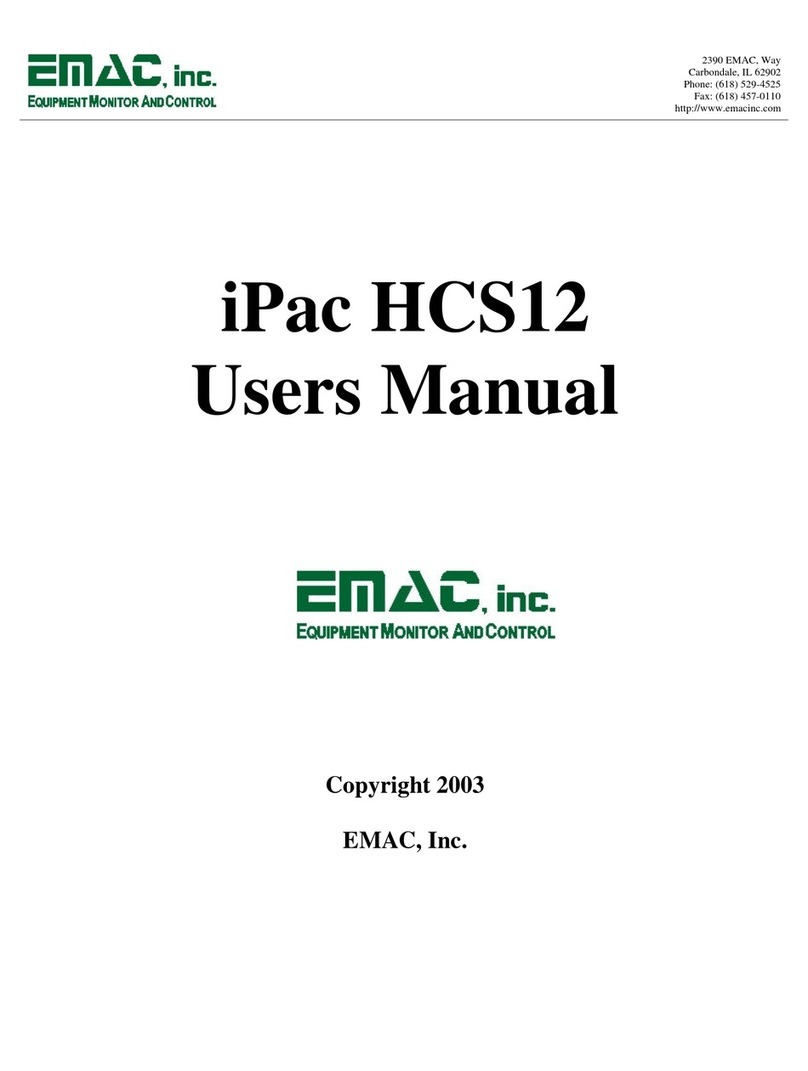
EMAC
EMAC iPac HCS12 User manual

EMAC
EMAC PCM-53E52 User manual
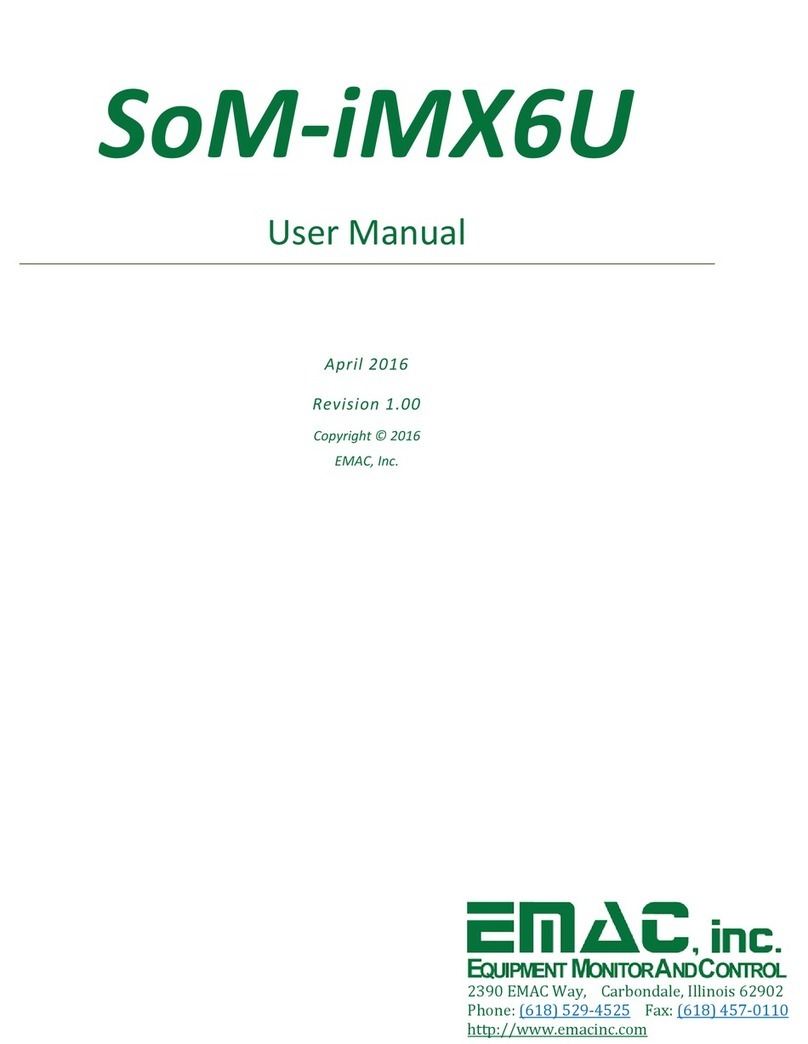
EMAC
EMAC SoM-iMX6U User manual
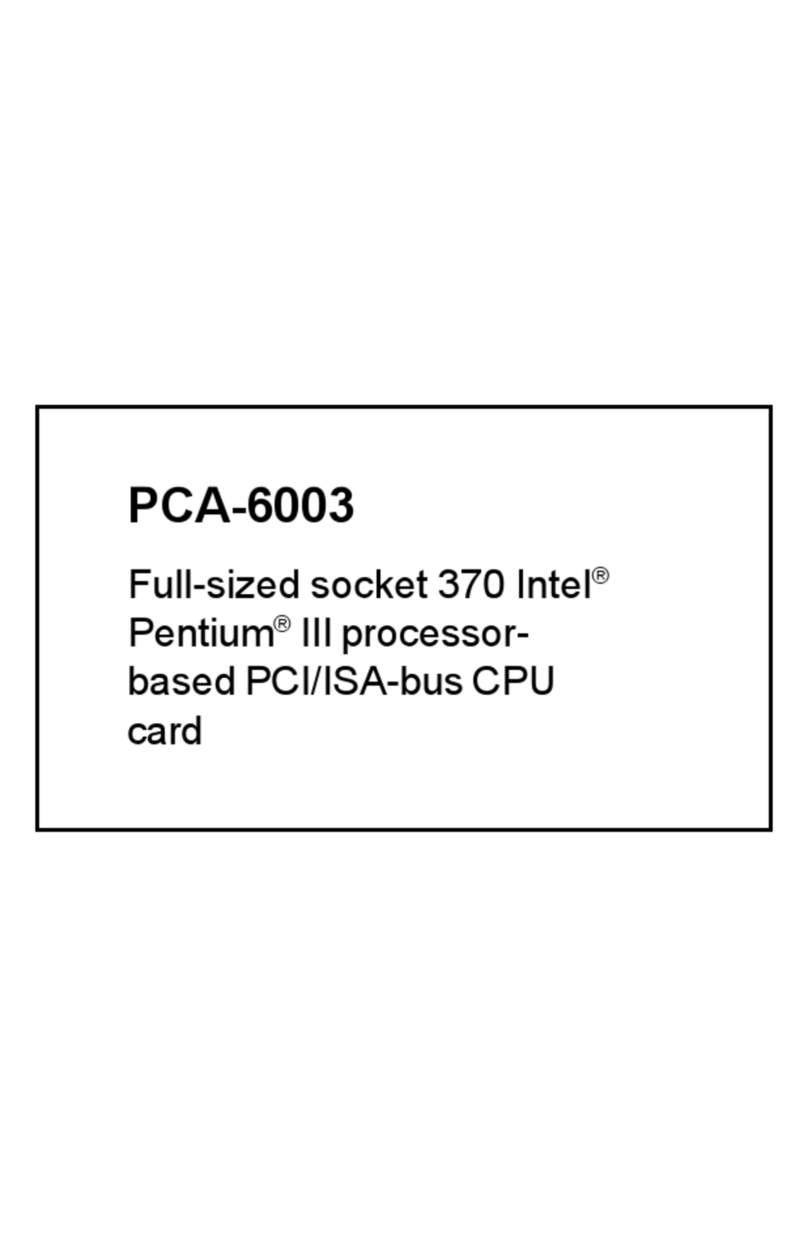
EMAC
EMAC PCA-6003 User manual

EMAC
EMAC PCA-6782 User manual

EMAC
EMAC SBC-675 User manual
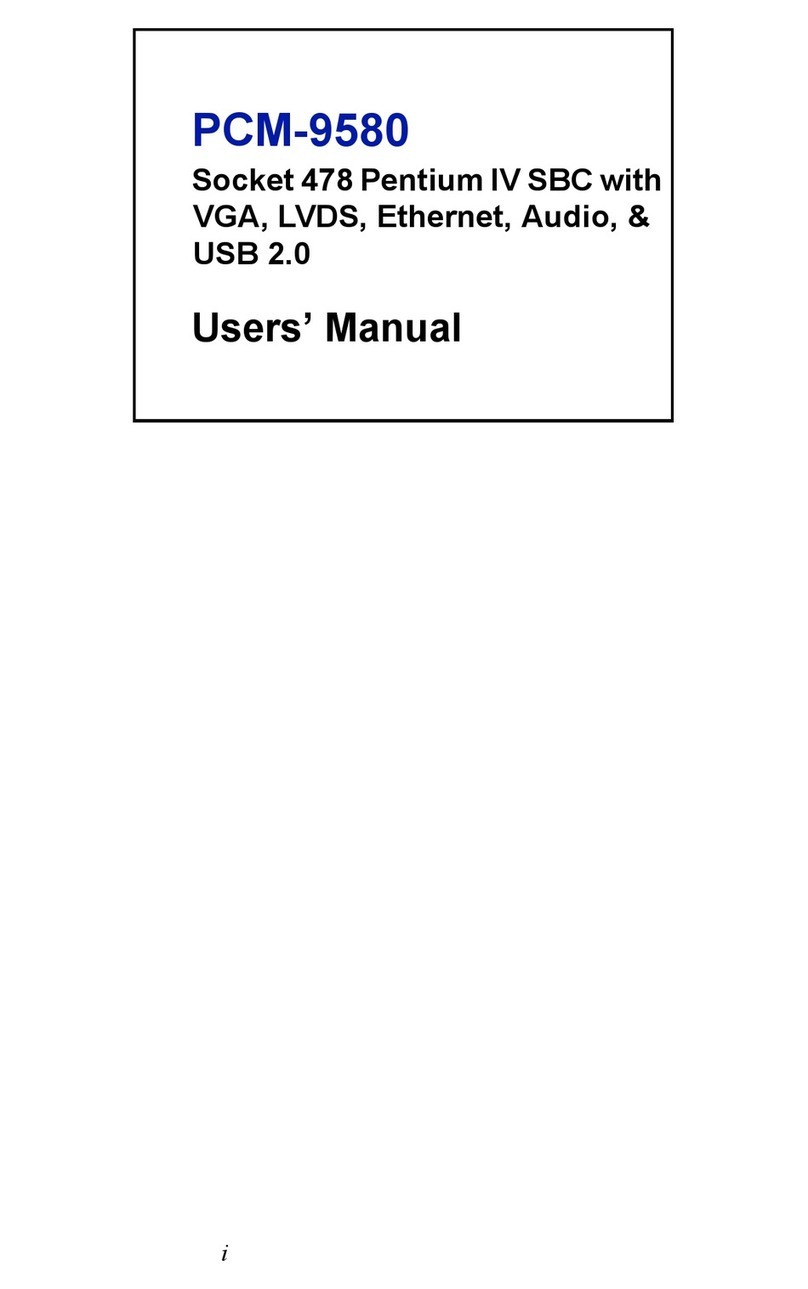
EMAC
EMAC PCM-9580F-00A1 User manual
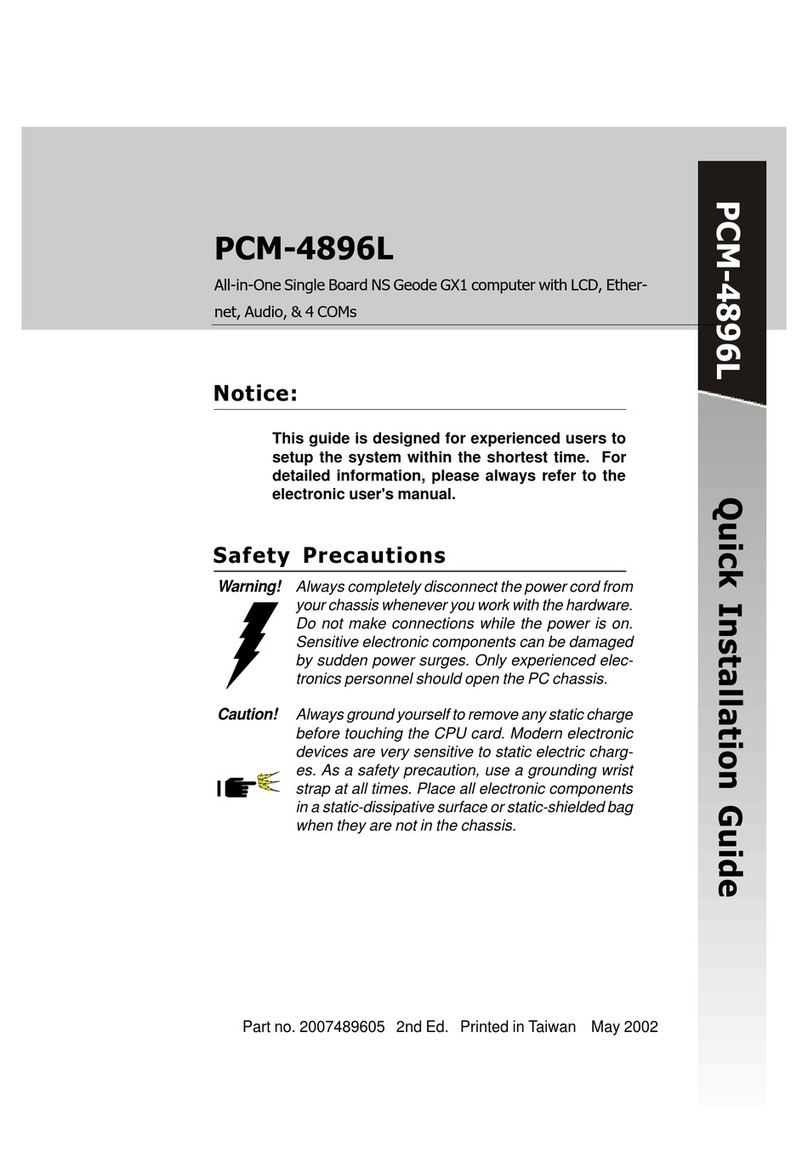
EMAC
EMAC PCM-4896L User manual
